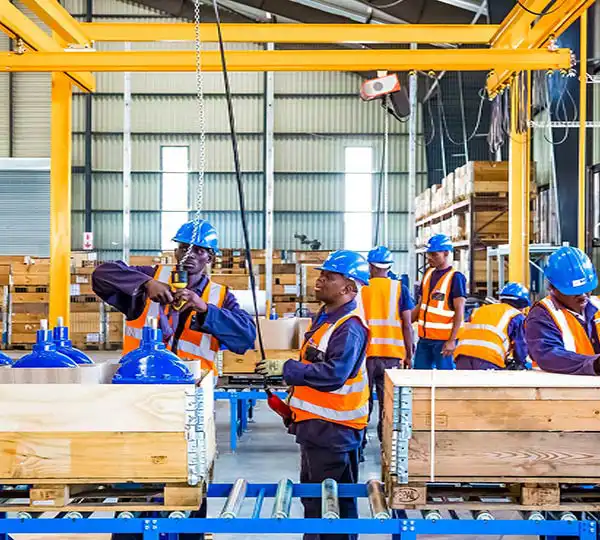
Winning at Talent Acquisition in 2023: The Complete Playbook
An increasingly competitive market, combined with changing trends and customer demand, is forcing companies in all industries to rethink their approach to recruiting.
What was once a simple hiring process has evolved into a complex cat-and-mouse game that requires savvy recruiters to be creative and find new ways to attract and retain top talent.
These unprecedented challenges also present forward-thinking companies with the opportunity to break new ground in recruiting new employees.
With the right strategy, HR departments can leverage the changing landscape of talent acquisition to make their organisations more competitive while streamlining internal processes and creating better candidate experiences.
To help you get there, we have compiled some of our most helpful tips on how to win at talent acquisition in 2023 and beyond.
What is Talent Acquisition?
Talent acquisition is the process of recruiting, evaluating and selecting applicants for employment. Also known as “people acquisition” or “employee sourcing”, talent acquisition is essential to any organisation’s workforce strategy.
The goal of talent acquisition can include attracting passive candidates who are not in the labour market but are open to career opportunities.
It can also include audience development — which involves engaging and building relationships with talent communities that align with your culture, values, and mission.
Above all, developing a successful talent acquisition strategy requires a deep understanding of your organisation’s needs, culture, and vision for growth. Once you know exactly what is required for success, you can determine your talent acquisition mix.
How does talent acquisition differ from recruitment?
Talent acquisition and recruitment differ in their methods, procedures, and results.
Recruitment is about filling an existing position. In most cases, you are looking for a candidate with specific skills and experience who is ready to start immediately and can contribute from day one. This is a very specific type of recruitment that requires candidate-specific ads, communications, and interviews.
On the other hand, talent acquisition is where you look for people who match your core attributes and values that will enable you to grow your business.
This is more of a holistic approach to hiring; rather than setting strict requirements in terms of years of experience or specific skills, you hire people who you believe can bring something new to the table, work well with others and contribute to the company.
Recommended reading: Recruitment process outsourcing (RPO): what it is and how to get started
Building a successful talent acquisition strategy
One of the most critical decisions in growing a business is who you hire. Before you spend time and money on ads, job postings and interviews, take a moment to develop a talent acquisition strategy that will ensure you attract suitable candidates.
With staff turnover costing American businesses an estimated $1 trillion annually, it is no wonder that many companies are turning to recruitment process outsourcing to find outstanding employees. But even if you decide to use an agency — which is perfectly acceptable — there is still work to be done before you begin your search.
Below are some talent management strategies to implement to ensure you find the best people for your business:
- Define your company’s culture
Defining your organisation’s culture is the first step to building a successful talent acquisition strategy. A company’s culture is the collection of values and beliefs that determine how people work together to achieve goals, solve problems and get results.
Once you know your company culture, you can more easily determine which talent acquisition strategies are best for your organisation. A strong culture that fosters teamwork, community, and inclusion increases engagement exponentially.
- Audit your current talent acquisition capabilities
Once you have defined your organisational culture, it is time to review your current talent acquisition capabilities. This may include any existing processes or tools used to find new employees or to evaluate current employees for promotion or reassignments within the organisation.
It is equally important to consider the extent to which these processes and tools align with your organisation’s culture and values, as this is likely to influence which strategies are most effective in finding candidates who align with these values.
For example, if you are searching for employees who are looking for long-term job security or stability, then it may be better not to use an applicant tracking system but instead rely on internal recommendations.
- Invest in training and development
Building a successful talent acquisition strategy is an iterative process. It is not something you do once and then never pick up again.
Studies have shown that talent acquisition professionals who invest in training and development are more likely to succeed than those who do not.
Investing in training and development creates a learning culture in your organisation, so everyone feels empowered to contribute and take on new challenges.
When people grow through their work experiences, they become more valuable employees — and that value can be measured by the quality of their work and their contribution to the bottom line.
- Set goals and measurements for success
What do you want to achieve with your talent acquisition strategy? How would you know if it was a success? What metrics will you use to assess the effectiveness of the strategy?
An effective talent acquisition strategy should include setting goals for yourself and your employees.
For example, if you expect each employee to have more turnover than last year, you should ensure that each employee knows what those numbers should be before they start working.
By setting these kinds of expectations, you can ensure that everyone is accountable for their level of performance and does not feel that anyone is holding them back from achieving bigger goals.
Recommended reading: The ultimate guide to employee outsourcing in Nigeria
What is the future of talent acquisition?
Although it is difficult to say with certainty what the future of talent acquisition will look like, we can start by observing the factors influencing its evolution today: rapid technological advancement, the war for talent, the great resignation, and brain drain, amongst others.
Below are some factors that will shape the future of talent acquisition and, by extension, the future of work — and how you can stay ahead of the curve:
- Rise in “intelligent hiring” powered by Big Data

Big data allows recruiters to use a strategic approach in finding talents
As we move further into the digital age, the role of Big Data in talent acquisition is becoming increasingly important.
According to LinkedIn’s Global Recruiting Trends, 50% of hiring managers use Big Data as part of their talent management strategy. This has led to a 56% increase in employee retention for discerning organisations.
Big Data is the ability to collect and analyse large amounts of information to gain insights into a company’s operations.
In terms of talent acquisition, Big Data can help companies understand behavioural and background information about candidates and give employers real-time insights into their candidate pipeline, so they can make smarter hiring decisions.
In addition, Big Data allows employers to reduce the time spent on recruitment by automating many of the processes associated with hiring new employees.
For example, companies can automate certain HR functions such as sending applicants emails, onboarding, time tracking, and even vacation and leave requests.
Using Big Data, companies can also identify specific patterns in how employees change jobs — and, more importantly, why they leave — which can help them avoid mistakes when hiring new employees (or retaining existing ones).
- Digital recruitment will play a more significant role in talent sourcing

Social recruiting is the practice of using social media channels to recruit top talent
Digital recruitment is a hiring approach that uses technology such as social media, video calls and text messaging to conduct interviews remotely. This way, companies can recruit talent worldwide without spending money on travel or accommodation costs.
The ability to connect candidates wherever they are and whenever they want to be contacted is a significant competitive advantage for companies. A survey conducted by Careerarc found that 86% of job seekers use social media as part of their job search process.
And while many companies still rely on traditional recruitment methods such as job boards and paper resumes, more are turning to digital methods like social media apps and hiring platforms.
Interestingly, 60% of companies plan to use social recruiting as part of their talent acquisition strategy.
This shift has been driven by increasing competition for talent as companies scramble to hire the best people and the need for flexibility in finding candidates and matching them with employer requirements.
According to LinkedIn’s Future of Recruiting study, 68% of hiring managers believe that “tools to find and engage candidates” are the most influential recruiting technology and will have the most significant impact in the coming years.
Related reading: Your organisation needs customised learning – learn why
- AI will become more integrated into recruitment processes
AI automation refers to the use of artificial intelligence (AI) software within a company’s technology stack to perform specific tasks without human intervention.
In the past, companies have relied on an army of recruiters to source candidates — but that may not be the case in the future. As AI becomes more advanced and powerful, more companies will use algorithms to analyse data and find candidates who are perfect matches for open positions.
Companies like Gloat, SAP SuccessFactors and Phenom Gigs are already using this technology to match employees with open positions.
In addition, studies show that 99% of Fortune 500 companies rely on the help of talent-sifting software and 55% of HR managers in the U.S. use predictive algorithms to support hiring. This initiative could relieve recruiters from sifting through CVs and conducting face-to-face interviews.
Further, as artificial intelligence becomes more sophisticated, it will better understand how to match applicants with open positions based on specific criteria. This means that recruiters will no longer be constrained by their own biases or judgements about which candidates are ‘right’ for a job.
AI in talent acquisition is here to stay, and the benefits are enticing for forward-thinking companies. Gartner predicts that over 30% of companies will use AI-based solutions in HR roles in 2022 and beyond.
How to stay ahead of the talent acquisition curve

Ask yourself: how will talent acquisition change in 2023 and beyond?
What will it take to stay on top of the talent acquisition game in 2023 and beyond? If you are not asking yourself this question, you could miss out on the opportunity to use TA as a competitive advantage.
To stay ahead of the competition, consider the following five steps:
- Create a talent demand plan
Technology has changed not only the way applicants find jobs but also the way companies fill them. Creating a talent demand plan is the first step to staying ahead of the competition.
A talent demand plan is a strategic document describing a company’s steps to find, attract and hire suitably qualified candidates. This includes conducting a workforce analysis to determine the skills shortage, forecasting future needs for skilled and experienced workers, and creating plans to hire and develop these talents.
In addition, talent demand plan helps companies set specific goals, such as deciding whether to invest in automated sourcing software and which industry to prioritise over others.
To get this step right, you need to seek input from internal recruiters and HR managers to ensure everyone knows exactly what roles are needed and the quality of the hires.
- Enhance the candidate’s journey and experience
Another way talent acquisition can go beyond an administrative and transactional role is to add value to the candidate’s experience and journey. Whether they are researching, actively looking for a job or in the hiring process, you can ensure they find exactly what they need when they need it.
Recruiting top talent is not just about posting jobs — it is about being a resource to help employees achieve their career goals.
- Provide competitive benefits and perks
One surefire way to attract top talent is to offer an excellent benefits package. Companies must provide competitive perks that appeal to both new and long-term employees.
A solid benefits package includes health insurance, vacation days, sick leave and a retirement plan. Some companies may also want to consider offering flexible work arrangements or telecommuting options — benefits which can help retain employees who would otherwise seek work elsewhere.
- Change your sourcing strategies
As traditional sources of talent become more competitive, companies must evolve their sourcing strategies. In a constantly evolving market, nothing is static.
Now, more than ever, companies must focus on using all methods — including AI and other emerging technologies — to find the exact people they are looking for.
Sure, this will take some time (and money), but if you want your business to be at its strongest in the coming years, you must evolve your strategy.
- Select the right specialist partners
Getting recruitment and staffing wrong can be costly and are an easy way for companies to put their business development efforts on hold.
Not only does a bad hire affect employee morale (or productivity), but it also means a void in your organisation that needs to be filled — which likely means yet another interview.
Talent-centric companies should also consider process improvement as part of changing their sourcing strategies. This can be achieved by working with a professional employer organisation (PEO) that handles recruitment and employee outsourcing.
Take your talent acquisition to the next level
Talent is the quintessential asset of every business.
As the war for extraordinary talent continues, our goal is simple — to help you transform your talent acquisition function into a talent pipeline, so you can attract, hire, develop and retain a productive workforce.
Learn more about how you can attract in-demand talent faster, save time and reduce cost-per-hire. Book a consultation with our team of experts.










